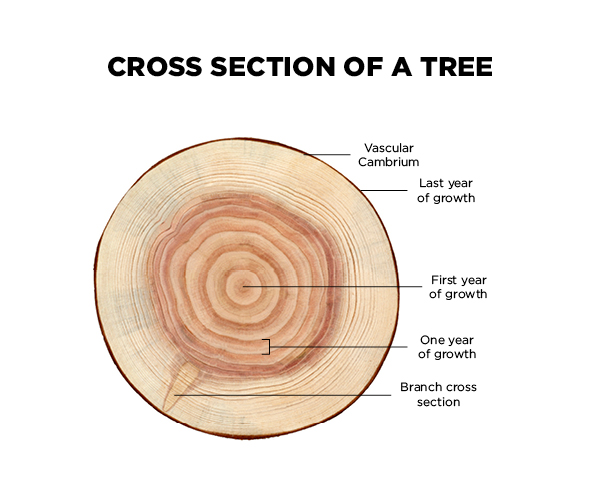In this activity, students learn about tree rings and how a tree grows wider each year.
Each ring of a tree represents one year of growth.
All of these tree rings are made up of cells that are actually dead, but act like tunnels for transporting water to other growing cell. Much of the trunk is devoted to water transportation because of the quantity of water needed by all the growing parts of large trees.
When a cross section of a tree is taken it is often referred to as a "tree cookie" due to its shape. The first year of growth is at the center of the tree cookie, while the last year’s growth is where the wood meets the bark.
The area where the bark meets the wood is a layer of cells called the vascular cambium. This is the only living part in the trunk of the tree.
Vascular cambium produces bark in one direction and wood in the other. This living layer is also where sugars move to all parts of the tree. This can be observed as a slimy layer found if bark has been peeled off a tree.
Warning: Peeling off a full horizontal strip of bark will kill a tree because it will not be able to transport sugars.

Looking at the rings of a tree can tell us a lot about environmental conditions in the region the tree was grown.
The lighter part of each ring is the spring season’s growth and is where most of the growth happens. The darker part of the ring is the summer or fall growth, which is when the rate of growth slows. The darker colour is made by cells growing smaller, closer together, and with thicker cell walls. Black parts can show when a fire has reached a tree and wide rings show a rainy season where much water led to much growth.

 copy.jpg)